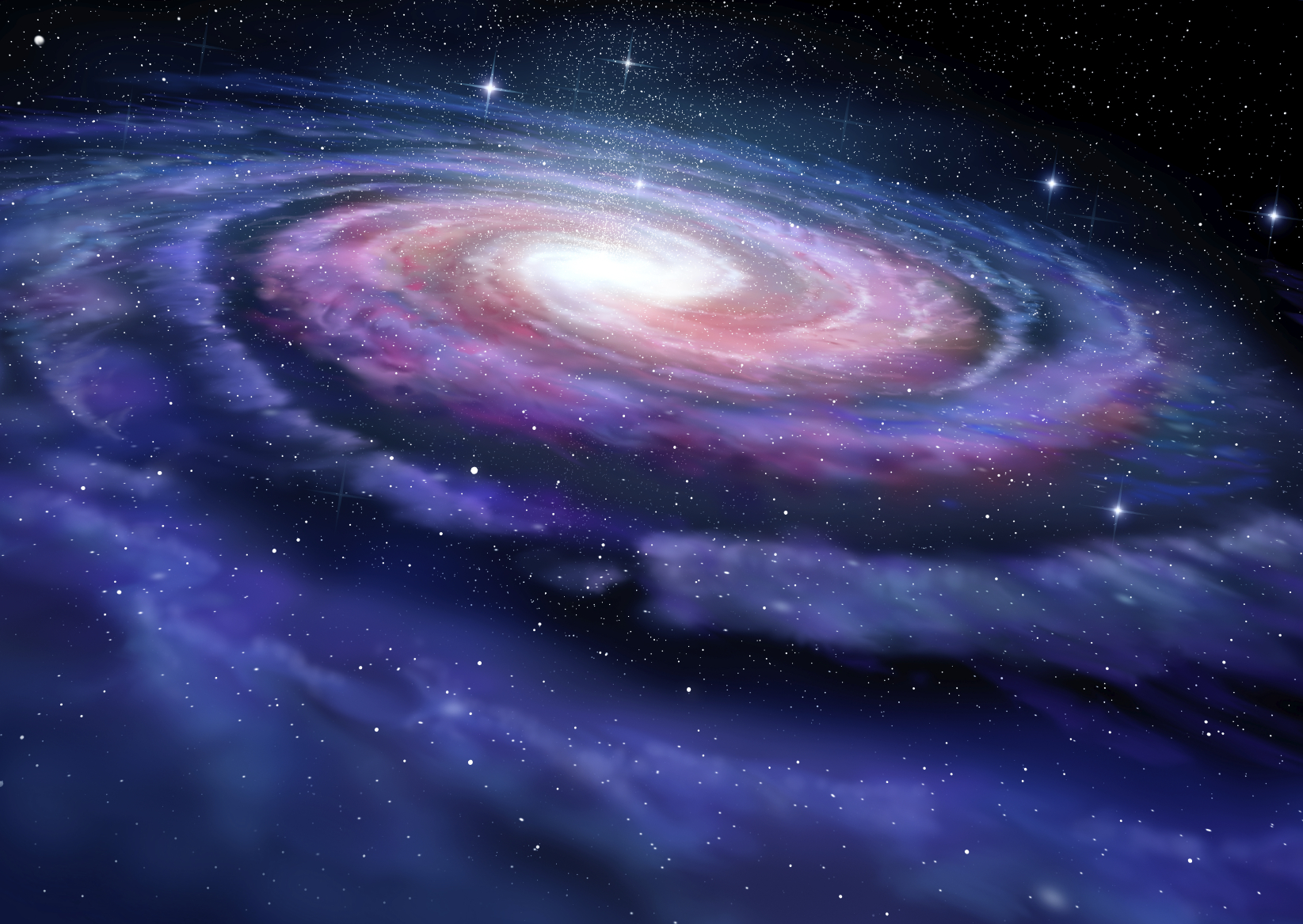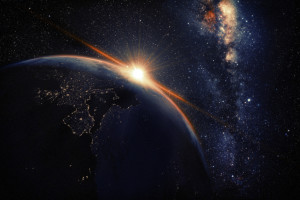I open our New Year’s Eve late night Mass (11:15 PM) with the observation that we begin Mass in one year and end in the next. New Year’s Eve highlights the mysterious passage between years. In a way I suppose it is no more mysterious than the passage from Thursday to Friday or from 10:00 AM to 10:01 AM.
In one sense, nothing could be simpler than time. I might ask you, “What time is it?” You might reply, “It’s 1:15.” Simple! But time has mysteries about it.
What is time? Some say it’s merely a measure of change, but that doesn’t make a lot of sense because change doesn’t occur at a steady pace at all.
Some say it’s just another way of measuring distance in the space-time continuum. Time and distance are certainly related. To look out at the stars at night is to look into the past; it has taken millions of years for the light from some stars to reach us over vast distances through the vacuum of space. Even the light from our sun is eight minutes old before it reaches us.
But there’s more to time than distance, and we all know it. There are several different words for time in Greek. Chronos refers to clock time. Kairos encompasses a complex notion of time experienced subjectively. Sometimes ten minutes can seem like an hour, but there are other times when an hour can pass by swiftly. Further, things can seem fitting at certain times but not at others. Kairos thus expresses an elastic notion of time. Finally, there is aeon (eternity, or the fullness of time). I’ll comment more on aeon below.
Every year at this point I ponder the mystery of time, probably because time is so much on our minds. As I do so, I am mindful that most of us think we know what time is until we’re asked to define it in some meaningful way. It reminds me of what St. Augustine once said about another mystery: the Trinity. If someone asks me to define time, I am tempted quote St. Augustine: “If you don’t ask me, I know. If you ask me, I don’t know.” So time, while plain and simple on one level, is mysterious on other levels.
I cannot list all such mysteries, but consider these examples:
The Mystery of Time’s Elasticity
We like to think that time is unvarying, that 10 minutes here is the same as 10 minutes there. But science has largely disproved that. For example, as an object approaches the speed of light, time slows down. Further, strong gravitational forces also slow down time. On a very large planet with strong gravitational forces I would age less rapidly than on a smaller planet. Granted, it would take a huge difference in speed or gravity to be able to observe much of a difference, but the law of relativity does demonstrate that time does not pass equally everywhere. In a way, it is almost like a comparing a large, lumbering elephant to a tiny mouse. As the mouse scurries across the floor (pursued by my cat!) its speed is amazing, almost as if the mouse were operating in a different time frame.
The Mystery of Life Spans
Why are the life spans of different species so different? Like me, my cat Daniel is a mammal; our physiology is quite similar in most respects. Yet his clock is likely to expire after about 15 years while mine is more likely to make it closer to 80 years. Certain turtles can live up to 150 years. Many types of parrots can live to be over 100, while other birds live only 10 to 15 years. Most fish live only a few years, but carp can live up to 100 years. We all seem to have a clock, a designated life span. But that life span seems quite variable even among very similar animals. We seem to carry the mystery of time within us. I have never heard a satisfying explanation of the wide variability in life spans.
The Mystery of our “Inner Clock”
Most of our demarcations of time are clearly rooted in the celestial cycle. A day is the cycle of the earth rotating on its axis. A year is the cycle of the earth orbiting the sun. A month (a least originally) is rooted in the cycle of the moon orbiting the earth (“month” is just a mispronunciation of “moonth”). Seasons result from the earth’s trajectory around the sun as well as the tilt of the earth’s rotational axis in relation to the plan of its orbit. More mysterious is the 7-day cycle we call the “week.” Where does it come from? Human beings in most cultures seem to have a need to “reset the clock” every seven days. The Genesis account of creation in seven days, surely influenced the Judeo-Christian culture, but other cultures show a similar tendency toward seven days. Where does the seven-day week come from? It’s mysterious. As humans, we seem have some inner clock that needs resetting at about that frequency.
The Mystery of Eternity
Finally, there is the mystery of what we call “eternity.” Most people misunderstand the word simply to mean a very long time. But that is not what is meant by the word. When the Greeks coined the word eternity (aeon) they meant by it “the fullness of time.” Eternity is the past, present, and future all being experienced at once. I cannot tell you what this is like, but I can illustrate it. Look at the graphic of the clock at the upper right. It shows 2:00 (let’s assume in the afternoon). That means that 10:00 AM is in the past while 6:00 PM is in the future. But consider the dot at the center of the clock. At that spot, 10:00 AM, 2:00 PM, and 6:00 PM are all the same; they are equally present to the center. We live our life in serial time, on the outer edge of the clock. But God does not; He lives in eternity. God lives in the fullness of time. For God, the past and the future are the same as the present. God is not “waiting” for things to happen. All things just are. God is not waiting and wondering whether you or I will get to Heaven. He is not watching history unfold like a movie. In eternity, thousands of years ago is just as present as is thousands of years from now.
Scripture hints at God’s eternity in numerous passages:
But do not ignore this one fact, beloved, that with the Lord one day is like a thousand years and a thousand years like one day (2 Peter 3:8).
Your eyes foresaw my actions; in your book all are written down; my days were shaped, before one came to be (Ps 139, 15).
For a thousand years in your sight are like a day that has just gone by, or like a watch in the night (Ps 90:4).
And then there is God’s name: “I AM.” In this name there is no past and no future, just an eternal now (the present tense). Jesus declared to the crowds, Before Abraham ever was, I AM (John 8:58). This is the most awesome mystery of time: the fullness of time, eternity.
Ponder God’s glory and the mystery of time!
Here’s a remarkable video on the mystery of time:










